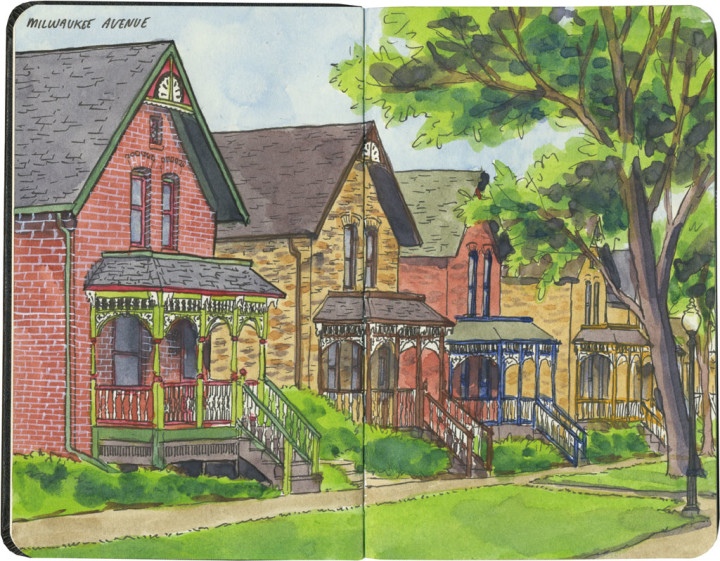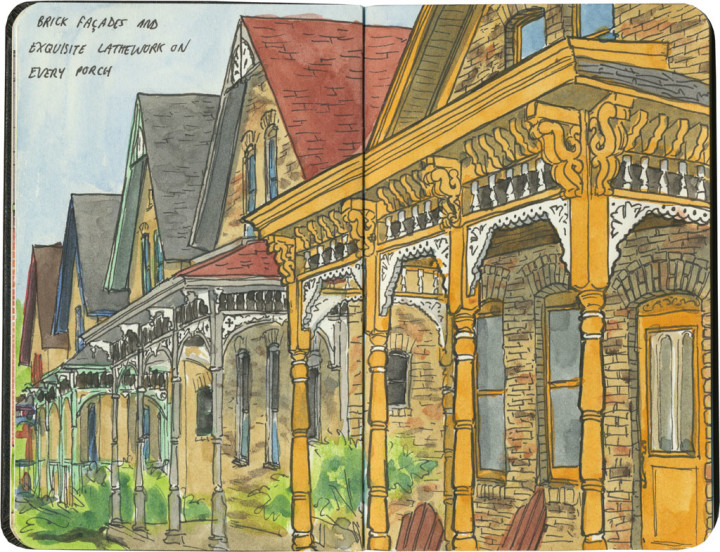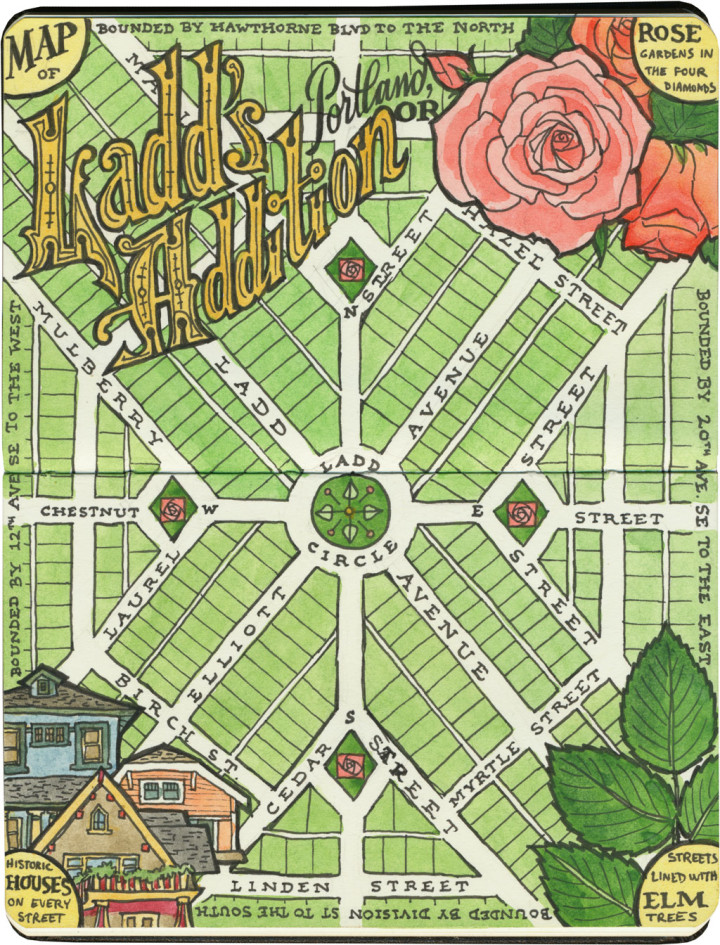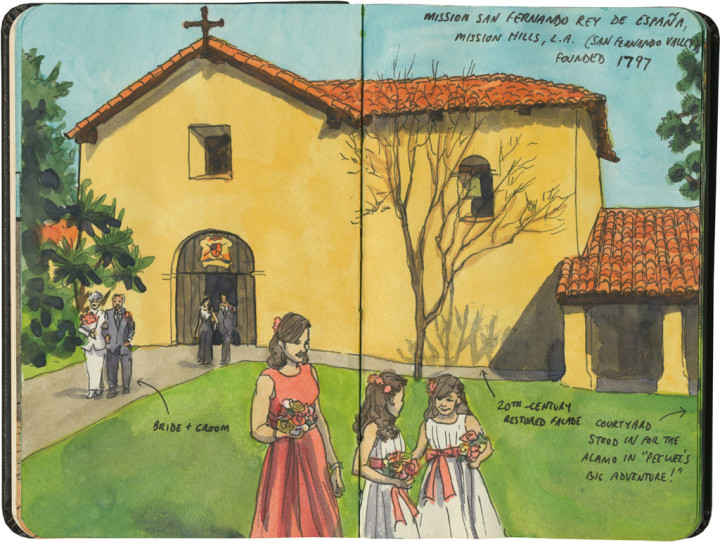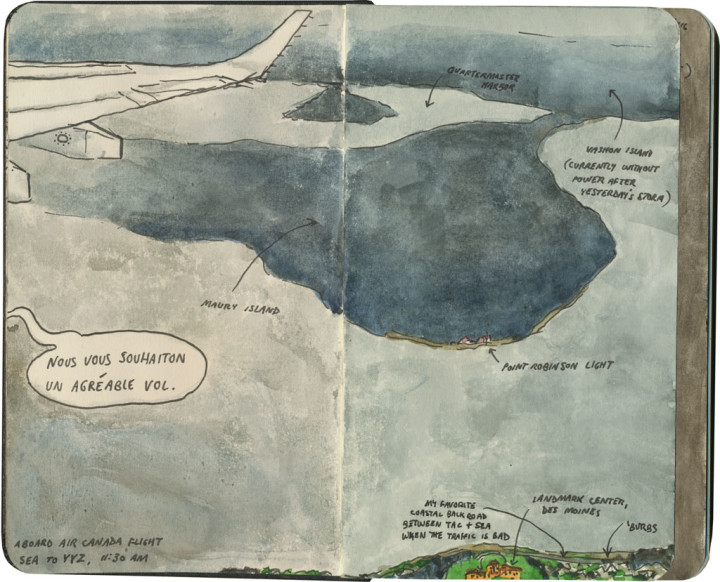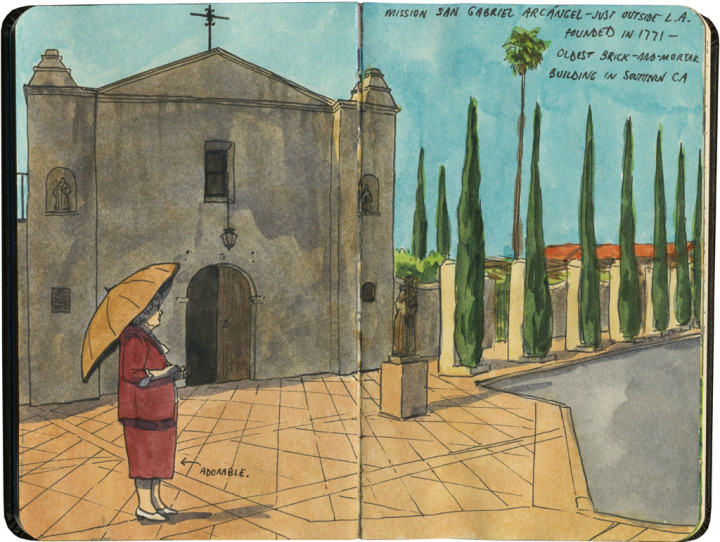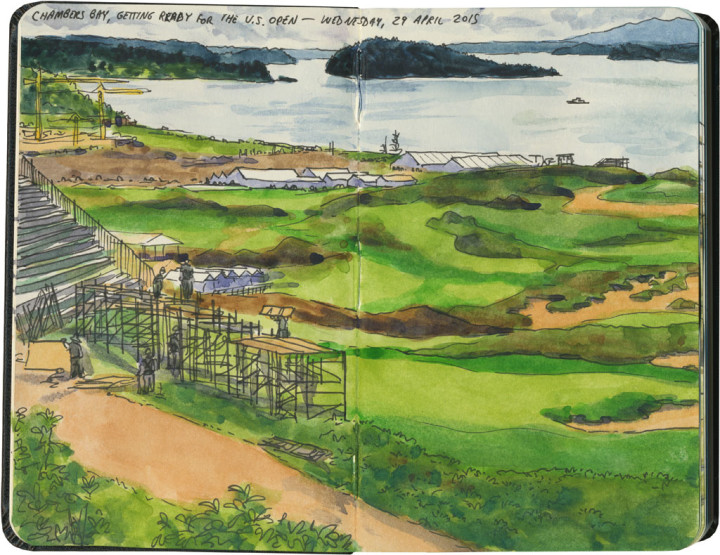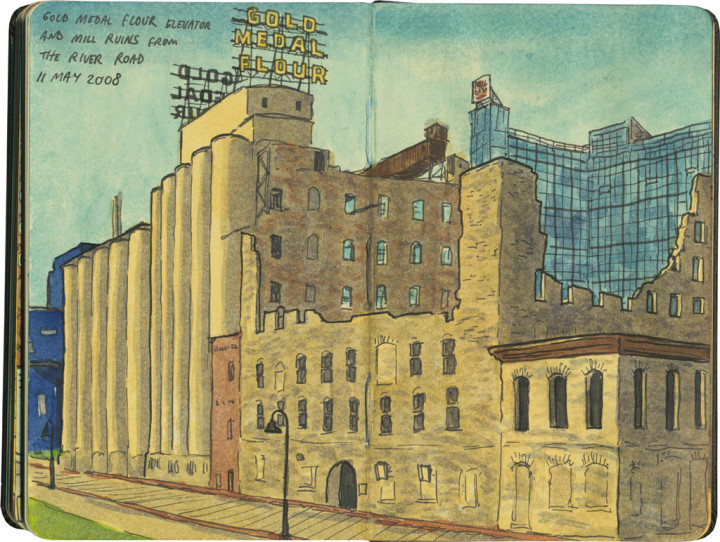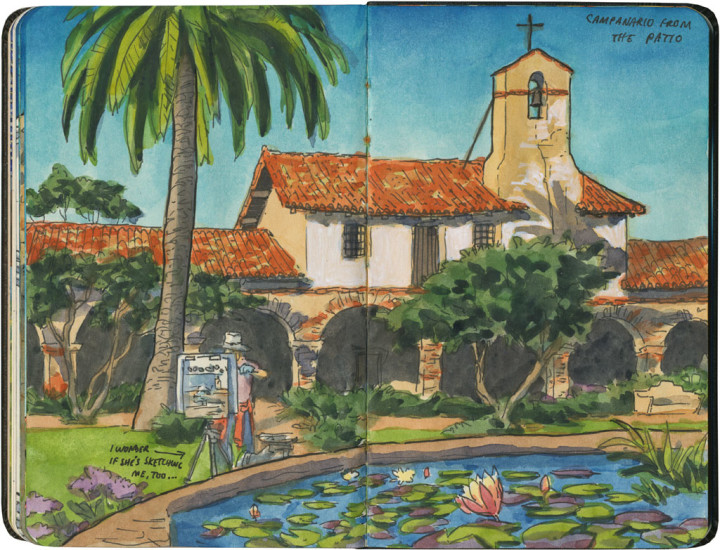
This is the third installment of my Mission Mondays series, exploring all 21 Spanish Missions along the California coast. You can read more about this series, and see a sketch map of all the missions, at this post.
San Juan Capistrano is the jewel of the missions—seriously, it’s hard to think of a more beautiful place in all of California. I ended up finishing off the whole rest of my sketchbook there, because every time I blocked out a rough composition, I’d look in another direction and see something else I just had to draw.

Founded in 1776, Mission San Juan Capistrano contains the oldest building in California still in use. But the thing everyone comes to see is the large portion of the complex that lies in ruin.

If you come to the mission from the north, the first thing you’ll see is the relatively brand-new mission basilica. The building is gorgeous, but was only built in 1986. Still, it follows the design of the original mission church—

—which is on the the other end of the property, and looks like this. The church was built in 1806, and flattened six years later by an earthquake. The ruins are where the famous swallows nest and return each year—though these days, that’s not so true anymore. I was there a month too soon anyway, so I saw a grand total of one swallow. But thanks to recent factors like increased development in the town and possibly climate change, the huge flocks just aren’t coming anymore. In the past 20 years or so, only a few birds have been coming home to roost each spring.

Hearing about the swallows was certainly a disappointment, but I was too enamored of the buildings themselves to be sad for long. What they most reminded me of was my time living in Italy. The cloister archways were one thing, but seeing the ruined stone church transported me right back to the Roman Forum.

The other thing that reminded me of Rome was the light—it was the kind of place where the “magic hour” seemed to last all afternoon.

I picked a good day to visit, too—despite the perfect weather, I was there in the off-season.

So even though I’m sure the place is packed to the gills during swallow season, there were only a handful of visitors there with me that day.

So that allowed me to choose whatever vantage point I wanted, and spent plenty of uninterrupted time sketching—just me, the mission, and all that Mediterranean light.




